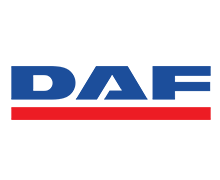-

Source from : daf.com
-
Ultra-modern common rail technology
Ultra-modern common rail technology, which delivers precise fuel injection for optimal combustion, lower emissions and lower noise.
It is a fuel supply method that uses a high-pressure pump to generate a constant pressure of fuel for all the injectors in the engine. The injectors are controlled by an electronic unit that regulates the timing, duration and amount of fuel injection for optimal combustion. This technology allows for more precise and flexible fuel delivery, resulting in better engine performance, lower emissions and lower noise. Some examples of automotive manufacturers that use common rail technology are Audi, BMW, Land Rover and Yanmar.
-
A turbo with variable geometry
A turbo with variable geometry, which adjusts the airflow to the engine for better performance and lower emissions.
It is a type of turbocharger that can adjust the flow of exhaust gasses across the turbine wheel, depending on the engine speed and load. This allows the turbo to act like a smaller or larger turbo, depending on the situation, and thus improve the engine performance, efficiency and control. The DAF XD offers two turbo engines with variable geometry: the 6.7-litre PACCAR PX-7 and the 10.8-litre PACCAR MX-11. These engines use ultra-modern common rail technology, exhaust gas recirculation, selective catalytic reduction and an active soot filter to comply with the strict Euro 6 emissions requirements.
-
Advanced controls
Advanced controls, which support down-speeding and thus reduce fuel consumption and noise.
Advanced controls PACCAR PX DAF XD are features that enhance the fuel efficiency, performance and safety of the truck. Some examples are:
- Third-generation Predictive Cruise Control that uses GPS and a digital map to adjust the speed and gear selection according to the road ahead.
- New EcoRoll functionalities that allow the truck to coast at up to 93 km/h at the end of a descent, reducing unnecessary braking and energy losses.
- Optimised EcoRoll that prevents the truck from rolling back on a slope, improving driver comfort and safety.
- PACCAR EX-D1 and PACCAR EX-D2 permanent magnet e-motors that power the electric versions of the DAF XD and XF, offering outputs from 170 kW/230 hp to 350 kW/480 hp.
-
Exhaust gas recirculation
Exhaust gas recirculation, which reduces the amount of nitrogen oxides in the exhaust gas.
Exhaust gas recirculation (EGR) is a system that reduces harmful emissions from diesel engines by recirculating a portion of the exhaust gas back into the engine cylinders. This lowers the combustion temperature and reduces the formation of nitrogen oxides (NOx), which are harmful pollutants. The PACCAR PX engines use EGR in combination with a Diesel Particulate Filter (DPF) and a Selective Catalytic Reducer (SCR) with airless AdBlue injection to meet the strict Euro 6 emissions requirements. The DPF captures the soot particles from the exhaust gas, while the SCR converts the NOx into harmless nitrogen and water using AdBlue, which is a urea-based solution.
-
Selective catalytic reduction and an active soot filter
Selective catalytic reduction and an active soot filter, which further reduce the emissions of nitrogen oxides and particulate matter.
According to the specifications, the PACCAR PX 7 engine has a peak horsepower rating of 200 to 360 hp and a peak torque of 520 to 800 lb-ft at 1,600 rpm. It also has reduced maintenance and long service intervals.
-

Source from: daf.com
-

Source from: daf.com

- Truck and Van Sales 0333 188 2194
- Truck and Van Service Find Your Nearest Dealer


